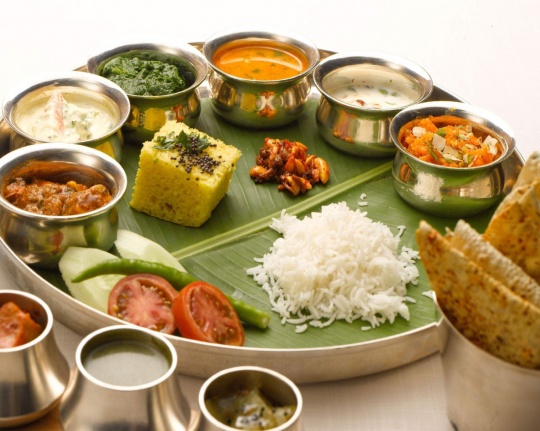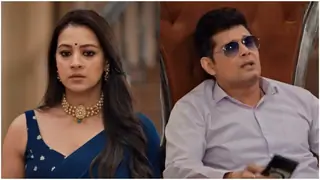Navratri
Navaratri is a festival dedicated to the worship of the Hindu deity Durga. The word Navaratri means 'nine nights' in Sanskrit, navameaning nine and ratri meaning nights. During these nine nights and ten days, nine forms of Devi are worshipped. The tenth day is commonly referred to as Vijayadashami or "Dussehra" (also spelled Dasera). Navaratri is an important major festival and is celebrated all over India and Nepal.
Significance of Navratri
The beginning of spring and the beginning of autumn are considered to be important junctions of climate and solar influences. These two periods are taken as sacred opportunities for the worship of the Divine Mother Durga. The dates of the festivals are determined accordingly to the lunar calendar, on which each woman follow the tradition to wear three colors of dress on Navaratri.
Navaratri represents a celebration of the Goddess Amba, ( the Power). Navaratri or Nayadurga Parva happens to be the most auspicious and unique period od devotional sadhanas and worship of Shakti (the sublime, ultimate, absolute creative energy) of the Divine conceptualized as the Mother Goddess- Durga.
Navratri is a very important Hindu festival celebrated in India, which is devoted to Goddess Durga. The festival is celebrated with great reverence and faith across the country. It stretches over a period of nine days, with each of the nine days being dedicated to one of the nine forms of the Goddess. "Nava-ratri" literally means "nine nights." This festival is observed twice a year, once in the beginning of summer and again at the onset of winter.
During Navaratri, we invoke the energy aspect of God in the form of the universal mother, commonly referred to as "Durga," which literally means the remover of miseries of life. She is also referred to as "Devi" (goddess) or "Shakti" (energy or power). It is this energy, which helps God to proceed with the work of creation, preservation and destruction.
In other words, you can say that God is motionless, absolutely changeless, and the Divine Mother Durga, does everything. Truly speaking, our worship of Shakti re-confirms the scientific theory that energy is imperishable. It cannot be created or destroyed. It is always there.
Why Nine Nights & Days?
Navaratri is divided into sets of three days to adore different aspects of the supreme goddess. On the first three days, the Mother is invoked as powerful force called Durga in order to destroy all our impurities, vices and defects. The next three days, the Mother is adored as a giver of spiritual wealth, Lakshmi, who is considered to have the power of bestowing on her devotees the inexhaustible wealth. The final set of three days is spent in worshipping the mother as the goddess of wisdom, Saraswati. In order have all-round success in life, we need the blessings of all three aspects of the divine mother; hence, the worship for nine nights.
Another Legend - Ram and Ravana
Yet another legend of Navratri relates to the Hindu epic Ramayana. It goes that Lord Rama worshipped Goddess Durga in nine aspects, for nine days, in order to gather the strength and power to kill Ravana. He wanted to release Sita from the clutches of powerful demon king Ravana, who had abducted her.
Those nine nights became to be known as Navratri and the tenth day, on which Lord Rama killed Ravana, came to be called Vijayadashmi or Dusshera, signifying Rama's (good) triumph over Ravana (evil).
May this Navaratri be bright as ever, may it bring joy, health and wealth to you. May Maa Durga empower you and your family with her nine Swaroopa of name, fame, health, wealth, happiness, humanity, education, Bhakti & Shakti.
HAPPY NAVARATRI !!!












































